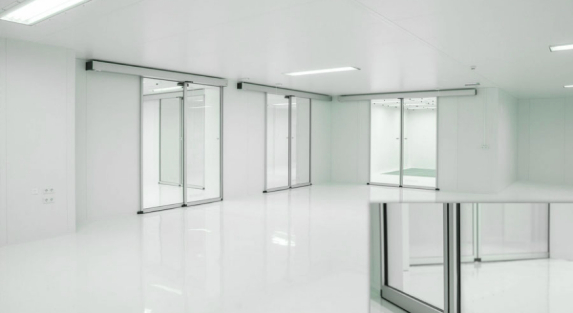Maintaining a cleanroom environment is critical for various industries, especially in pharmaceuticals, biotechnology, and electronics. Cleanrooms are designed to minimize contamination and maintain controlled conditions. However, the effectiveness of these environments hinges on proper cleaning and maintenance. This article explores the cleaning protocols for cleanrooms, the factors that influence cleaning frequency, and best practices to ensure compliance with current Good Manufacturing Practice (cGMP) standards.
1. Understanding Cleanrooms and Their Importance
Cleanrooms are specialized environments with controlled levels of contamination, temperature, humidity, and airflow. They are essential in sectors where even the slightest impurities can compromise product integrity. Understanding the purpose and significance of cleanrooms sets the foundation for comprehending the necessity of stringent cleaning protocols.
1.1 What is a Cleanroom?
A cleanroom is a controlled space where pollutants like dust, airborne microbes, and aerosol particles are regulated to specified limits. Cleanrooms are classified based on the number of particles permitted per cubic meter at a specified size. For example, ISO Class 5 cleanrooms allow a maximum of 3,520 particles per cubic meter for particles ≥0.5 microns.
1.2 Why Cleanrooms Are Critical
- Product Integrity: Contaminated environments can lead to defects in products, particularly in pharmaceuticals and electronics.
- Compliance: Industries must adhere to regulatory standards to ensure product safety and efficacy.
- Operational Efficiency: Regular cleaning minimizes equipment failures and prolongs the lifespan of cleanroom components.
2. cGMP Standards and Cleanroom Cleaning
Current Good Manufacturing Practice (cGMP) regulations set forth by the FDA and other regulatory bodies dictate how cleanrooms must be maintained. These guidelines ensure that facilities produce high-quality products consistently.
2.1 Key cGMP Requirements for Cleanrooms
- Documentation: Cleaning protocols must be documented, detailing procedures, schedules, and personnel involved.
- Training: Staff must be trained in cleanroom protocols, including cleaning methods and contamination control.
- Monitoring: Regular monitoring of cleanroom conditions (e.g., temperature, humidity, particle counts) is essential to validate cleanliness.
3. Factors Influencing Cleaning Frequency
Determining how often to clean cleanrooms involves considering various factors, including the type of cleanroom, the industry it serves, and specific operational needs.
3.1 Type of Cleanroom
The classification of the cleanroom significantly impacts cleaning frequency. Higher-class cleanrooms (e.g., ISO Class 5 or better) require more frequent cleaning due to stricter contamination control requirements.
3.2 Industry Standards
Different industries have varying cleaning protocols based on regulatory demands. For example, pharmaceutical cleanrooms often have more stringent requirements compared to those in electronics manufacturing.
3.3 Workload and Foot Traffic
The amount of activity in a cleanroom directly correlates with the level of contamination. Areas with high foot traffic or frequent material handling may require more frequent cleaning.
3.4 Cleaning Protocols
The effectiveness of the cleaning protocols employed also influences frequency. More effective methods may reduce the need for frequent cleanings.
4. Recommended Cleaning Frequencies
While specific cleaning schedules can vary, certain general guidelines can help determine how often to clean cleanrooms.
4.1 Daily Cleaning
Daily cleaning is typically recommended for all cleanrooms, especially in high-traffic areas. This includes:
- Floor Cleaning: Sweeping or vacuuming followed by wet mopping with appropriate disinfectants.
- Surface Disinfection: Wiping down surfaces, equipment, and tools to minimize contamination.
4.2 Weekly Cleaning
In addition to daily tasks, more thorough cleaning should occur weekly, which may include:
- Deep Cleaning: Intensive cleaning of surfaces, equipment, and any areas that require additional attention.
- HEPA Filter Maintenance: Checking and replacing filters as necessary to maintain air quality.
4.3 Monthly and Quarterly Cleaning
More extensive cleaning measures may be required on a monthly or quarterly basis. These may involve:
- Equipment Cleaning: Disassembling and cleaning equipment to prevent buildup of contaminants.
- Validation Studies: Performing tests to confirm that cleaning protocols are effective.
4.4 Annual Cleaning
A comprehensive cleaning should be conducted annually, including:
- Facility Inspection: Thorough inspections of the cleanroom structure and systems to identify potential areas for improvement.
- Protocol Review: Reviewing and updating cleaning protocols based on operational changes or new regulatory requirements.
5. Best Practices for Cleanroom Cleaning
Implementing best practices is essential to maintaining a clean and compliant cleanroom environment.
5.1 Establishing a Cleaning Schedule
A well-defined cleaning schedule should be established, detailing:
- Cleaning Tasks: Specific tasks to be performed daily, weekly, and monthly.
- Responsible Personnel: Assigning roles and responsibilities to ensure accountability.
5.2 Utilizing Appropriate Cleaning Agents
The choice of cleaning agents is crucial. Use products that are compatible with cleanroom materials and effective against the contaminants specific to your environment. Common agents include:
- Disinfectants: Alcohol-based or quaternary ammonium compounds that are effective against microbial contamination.
- Detergents: Mild detergents that do not leave residues and can be used for routine cleaning.
5.3 Training and Compliance
All personnel involved in cleanroom maintenance should receive proper training on:
- Cleaning Protocols: Understanding the cleaning processes and the importance of following them.
- Contamination Control: Learning best practices to minimize the risk of contamination during cleaning.
5.4 Documentation and Monitoring
Maintaining accurate records is essential for compliance and continuous improvement:
- Cleaning Logs: Documenting cleaning activities, including dates, times, and personnel involved.
- Monitoring Data: Keeping records of cleanroom monitoring results to identify trends and areas for improvement.
6. Conclusion
In conclusion, the frequency of cleaning cleanrooms is influenced by various factors, including the type of cleanroom, industry standards, and operational needs. Establishing a robust cleaning schedule that incorporates daily, weekly, monthly, and annual cleaning tasks is essential for maintaining a compliant and effective cleanroom environment. By adhering to cGMP standards and best practices, organizations can ensure the integrity of their products and the safety of their processes.
Regular maintenance of cleanrooms not only preserves product quality but also promotes operational efficiency and compliance with regulatory standards. By investing in professional cleaning and maintenance services, companies can uphold the highest standards of cleanliness and reliability in their cleanroom operations.







 (2).png)
.png)


 (1).png)
.png)